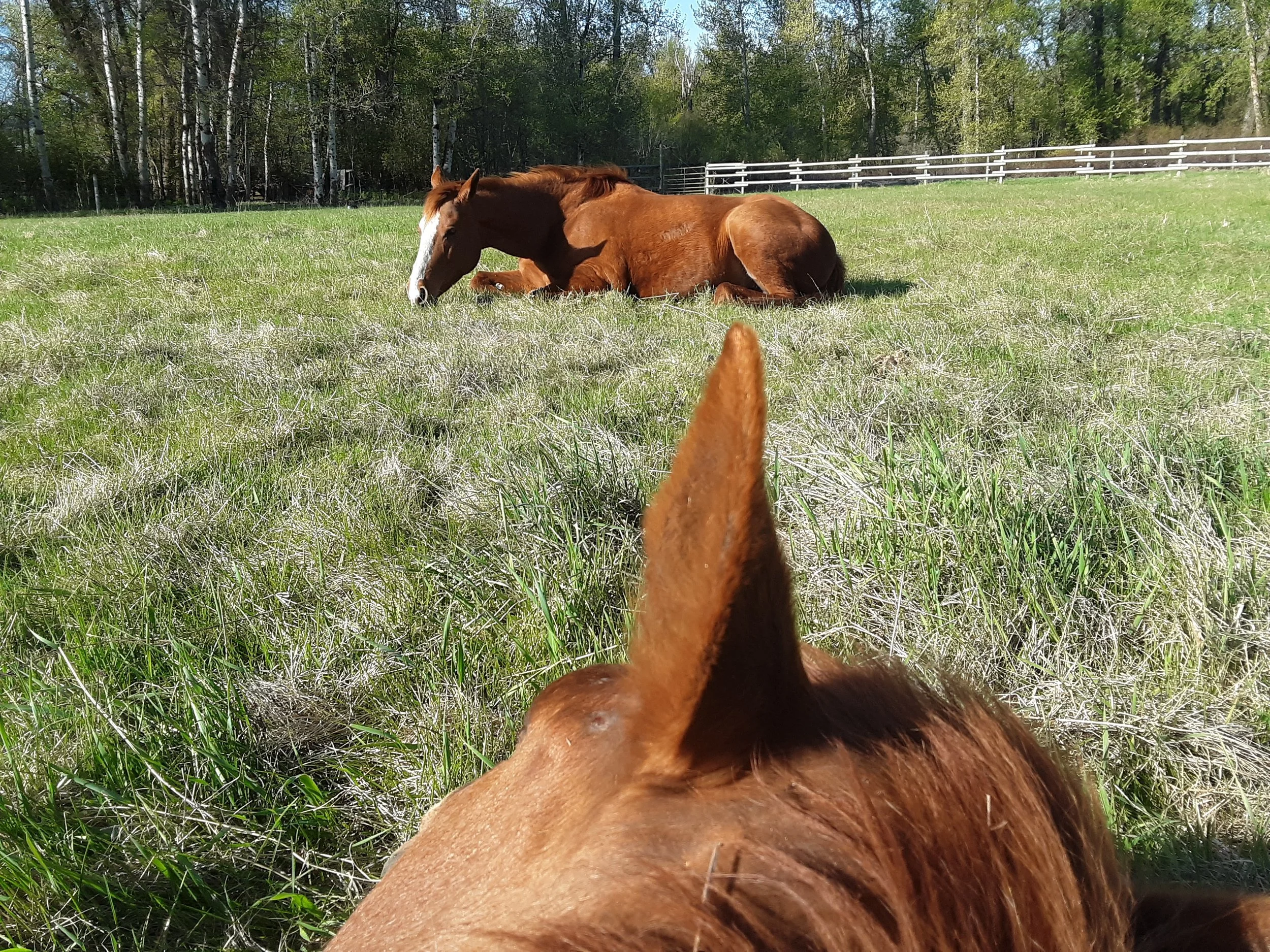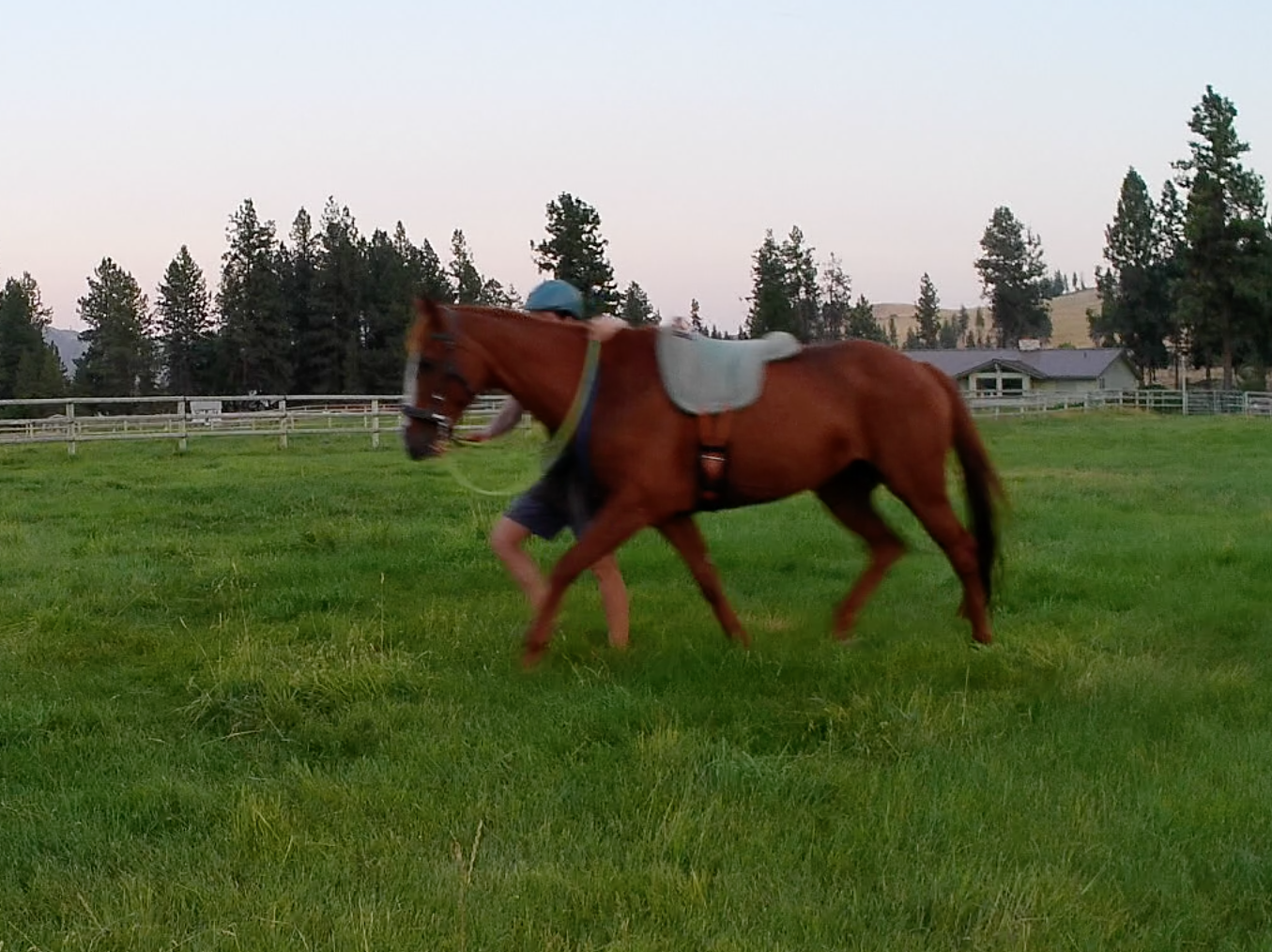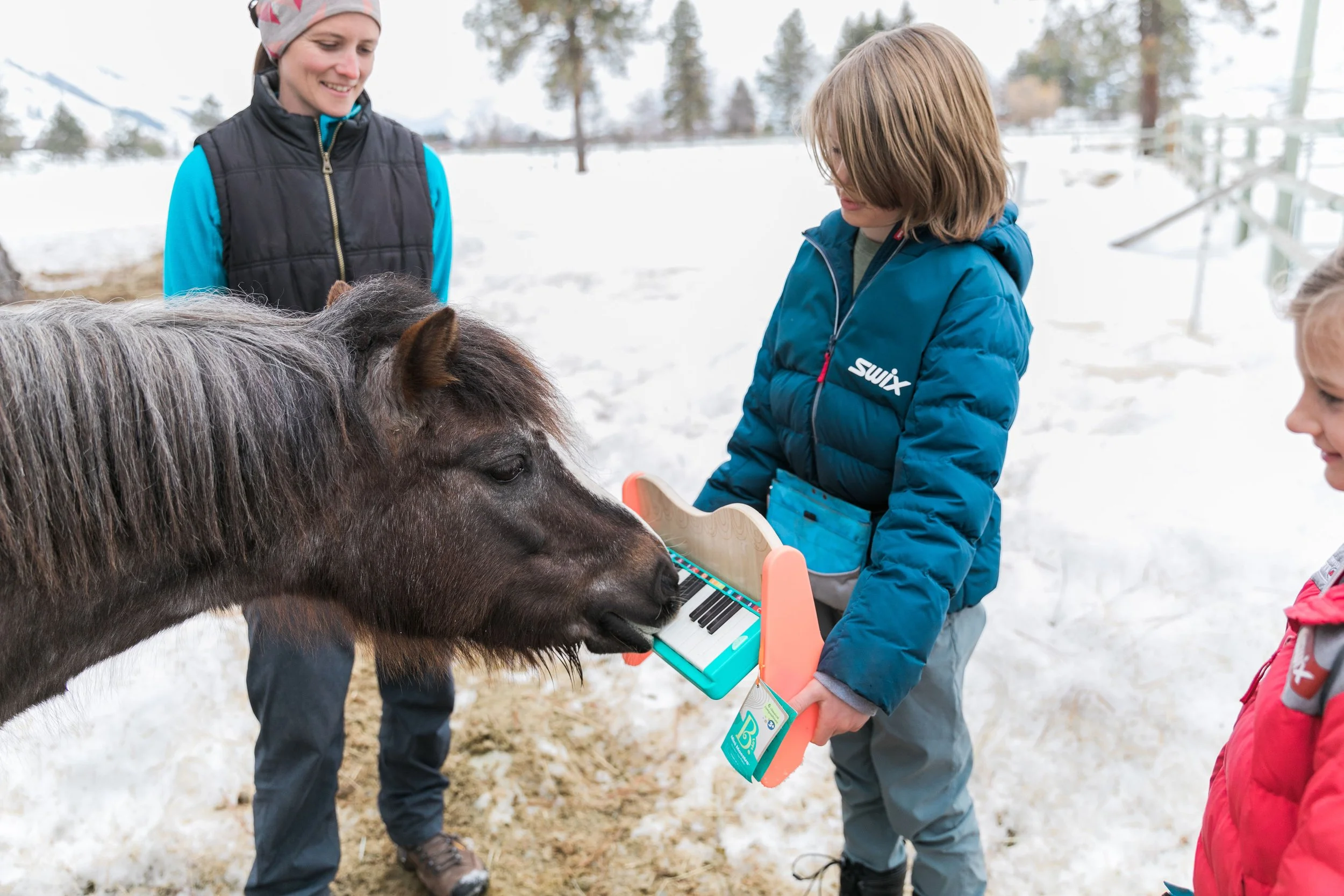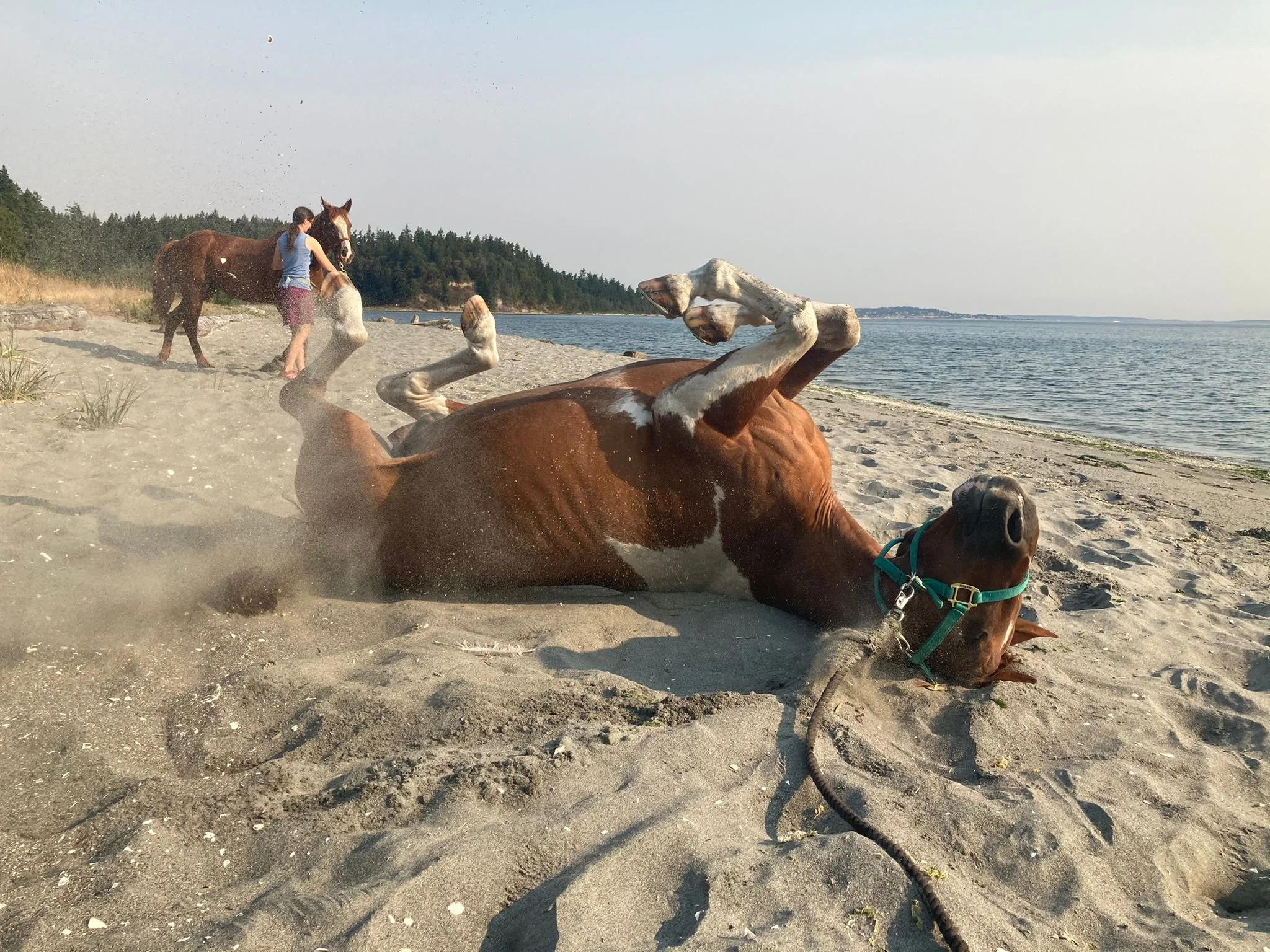Philosophy
Basic Needs
Horses deserve to have their basic needs met. They need movement, friends, nutrition, and healthcare. In our domestic environment, it can be challenging to meet these needs. Training becomes essential in most domestic environments to provide horses with physical and mental enrichment, and to help them comfortably participate in husbandry procedures and daily care.
Listening
Horses deserve to be listened to. Behavior is never random- all behavior has a purpose. It is our job to learn to listen to our horses; to educate ourselves on equine body language, signs of pain or discomfort, and physical imbalances or lameness. We want to shape a smaller and smaller “No” answer from our horses. They don’t need to yell anymore- they can whisper, and they will be understood. Imagine what a different world we would live in if we learned to listen to one another in the same manner.
Working with horses is a journey into mindfulness. If we let them be the teachers, we can learn so much about our own movement, thoughts, breathing, and relationships.
Balance
Physical and emotional balance are essential for a happy, healthy horse. Particularly if we want to ride, it is our responsibility to help the horse learn to carry themselves in a way that will promote long term soundness. For me, the horses are the best indicator of the quality of a training program. The trainers I admire have horses in their late 20’s who are still moving beautifully and performing high level movements with ease and enthusiasm. That is the life my horses deserve. I want my horses to love to move, and to feel better in their bodies each year that goes by. Good training can heal horses physically. Emotional balance develops with physical balance, helping a horse feel safe in their body and world.
Photo by Andrea Laughery, andrealaughery.com
Joy
Joy is the piece that brings it all together. Joy for us, joy for our horses, joy for each other. We can find fulfillment in the time spent with our horses, while also meeting their needs and giving them a voice. Horses can enjoy being ridden when it’s done thoughtfully. We really can have the best of both worlds, it just takes commitment to learning, listening, and time.
For me, there is joy in the timeless rhythms horses provide. The rhythm of the day, of their footfalls, their breathing, their nap times, and their play.They help me see and celebrate the joy inside myself.
Science, Ethics, and Art
There are many lenses through which we can view the world. The challenge is picking up the right one up at the right time. I take turns picking up the science and the art lens, sometimes looking through both at once. Ethics helps us translate what we see through the lenses into our actions.
As I take data, read papers, and develop a training plan, I look through the science lens. It provides me with the natural laws of the world, and a structure for asking and answering questions. But as I step next to my horse, the art lens becomes clearer. The horse is a living, breathing being with thoughts and emotions that I will never understand. The movement of our footfalls together and of our rib cages breathing in and out bring me to art. This is a dance between having a plan and letting the plan go, between observing and being observed, between the known and the yet to know. Training is an exercise in creativity.
I will continue expanding my knowledge of behavioral science, research, and current best practices in animal behavior change. I am committed to learning to digest and disseminate knowledge responsibly. I will do my best to adhere to the Humane Hierarchy, and will always try to make the most ethical decisions I can for the welfare of the horses. I am committed to learning, so I can continue to train better and make better decisions. For more information on the ethical standards held by the International Association of Animal Behavior Consultants, please visit https://iaabc.org/hierarchy.





